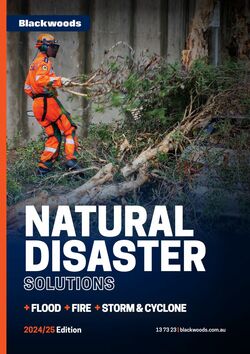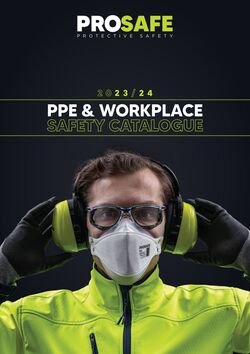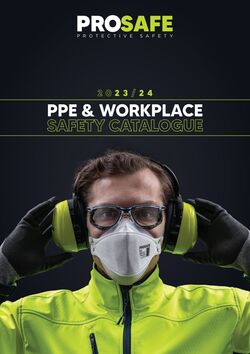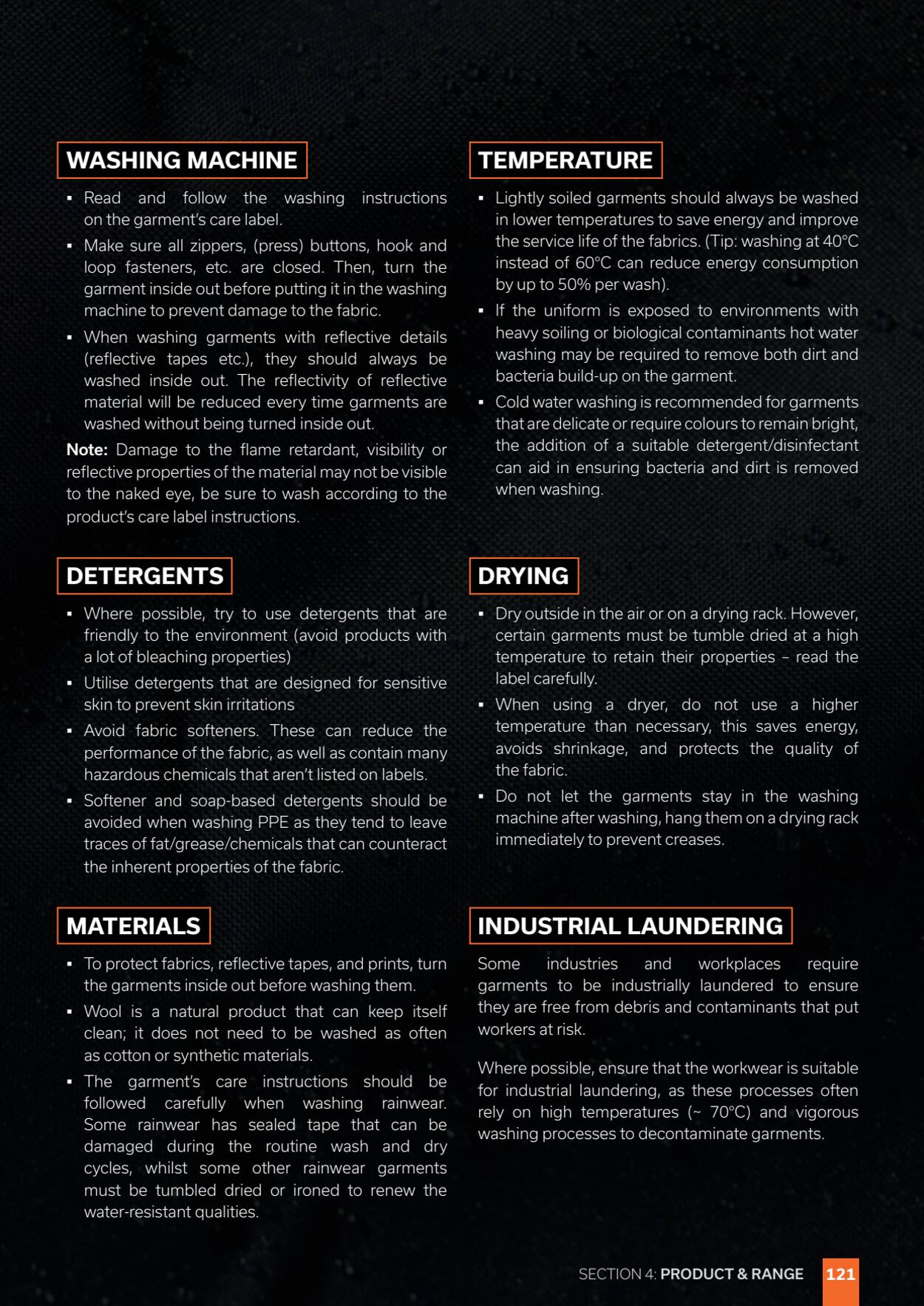













Products in this catalogue
= Read and follow the washing on the garments care label. flatsitaecortolal=) = Make sure all zippers, (press) buttons, hook and loop fasteners, etc. are closed. Then, turn the garment inside out before putting it in the washing machine to prevent damage to the fabric. * When washing garments with reflective details (reflective tapes etc.), they should always be washed inside out. The reflectivity of reflective material will be reduced every time garments are washed without being turned inside out. Note: Damage to the flame retardant, visibility or reflective properties of the material may not be visible to the naked eye, be sure to wash according to the product's care label instructions. DETERGENTS = Where possible, try to use detergents that are friendly to the environment (avoid products with a lot of bleaching properties) = Utilise detergents that are designed for sensitive skin to prevent skin irritations = Avoid fabric softeners. These can reduce the performance of the fabric, as well as contain many hazardous chemicals that aren't listed on labels. = Softener and soap-based detergents should be avoided when washing PPE as they tend to leave traces of fat/grease/chemicals that can counteract the inherent properties of the fabric. = To protect fabrics, reflective tapes, and prints, turn the garments inside out before washing them. = Wool is a natural product that can keep itself clean; it does not need to be washed as often as cotton or synthetic materials. * The garment's care instructions should be followed carefully when washing _ rainwear. Some rainwear has sealed tape that can be damaged during the routine wash and dry cycles, whilst some other rainwear garments must be tumbled dried or ironed to renew the water-resistant qualities. Oe Ue = Lightly soiled garments should always be washed in lower temperatures to save energy and improve the service life of the fabrics. (Tip: washing at 40°C instead of 60°C can reduce energy consumption by up to 50% per wash). = If the uniform is exposed to environments with heavy soiling or biological contaminants hot water washing may be required to remove both dirt and bacteria build-up on the garment. = Cold water washing is recommended for garments that are delicate or require colours to remain bright, the addition of a suitable detergent/disinfectant can aid in ensuring bacteria and dirt is removed when washing. = Dry outside in the air or on a drying rack. However, certain garments must be tumble dried at a high temperature to retain their properties - read the label carefully. =» When using a dryer, do not use a_ higher temperature than necessary, this saves energy, avoids shrinkage, and protects the quality of al-ai-loli(on = Do not let the garments stay in the washing machine after washing, hang them ona drying rack immediately to prevent creases. INDUSTRIAL LAUNDERING Some industries and workplaces require garments to be industrially laundered to ensure they are free from debris and contaminants that put Weld cice-1ag ca Where possible, ensure that the workwear is suitable for industrial laundering, as these processes often rely on high temperatures (~ 70°C) and vigorous washing processes to decontaminate garments. SECTION 4: PRODUCT & RANGE |
| Name | Details |
|---|